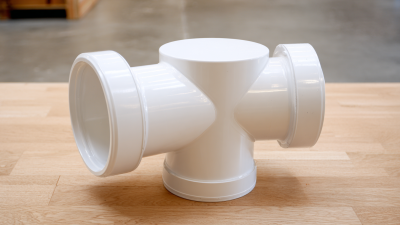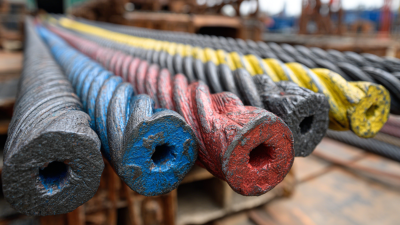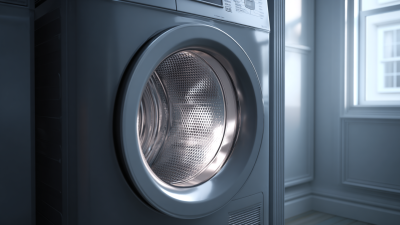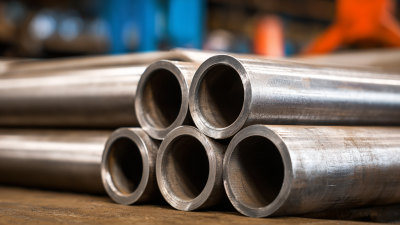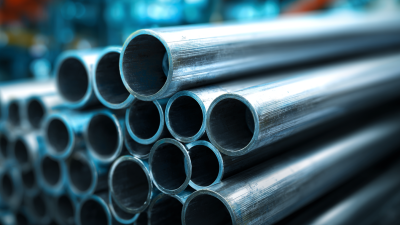The manufacturing landscape is rapidly evolving, with metal stamping parts playing a pivotal role in this transformation. As industries increasingly seek efficiency and innovation, the global metal stamping market is projected to reach USD 300 billion by 2025, according to industry reports. This growth is driven by the escalating demand for high-precision components in sectors such as automotive, aerospace, and electronics. Metal stamping parts are not only integral to reducing production costs but also to enhancing product durability and performance. Advances in technologies like automation and 3D printing are further expanding the applications of metal stamping, enabling manufacturers to explore innovative designs while meeting sustainability goals.
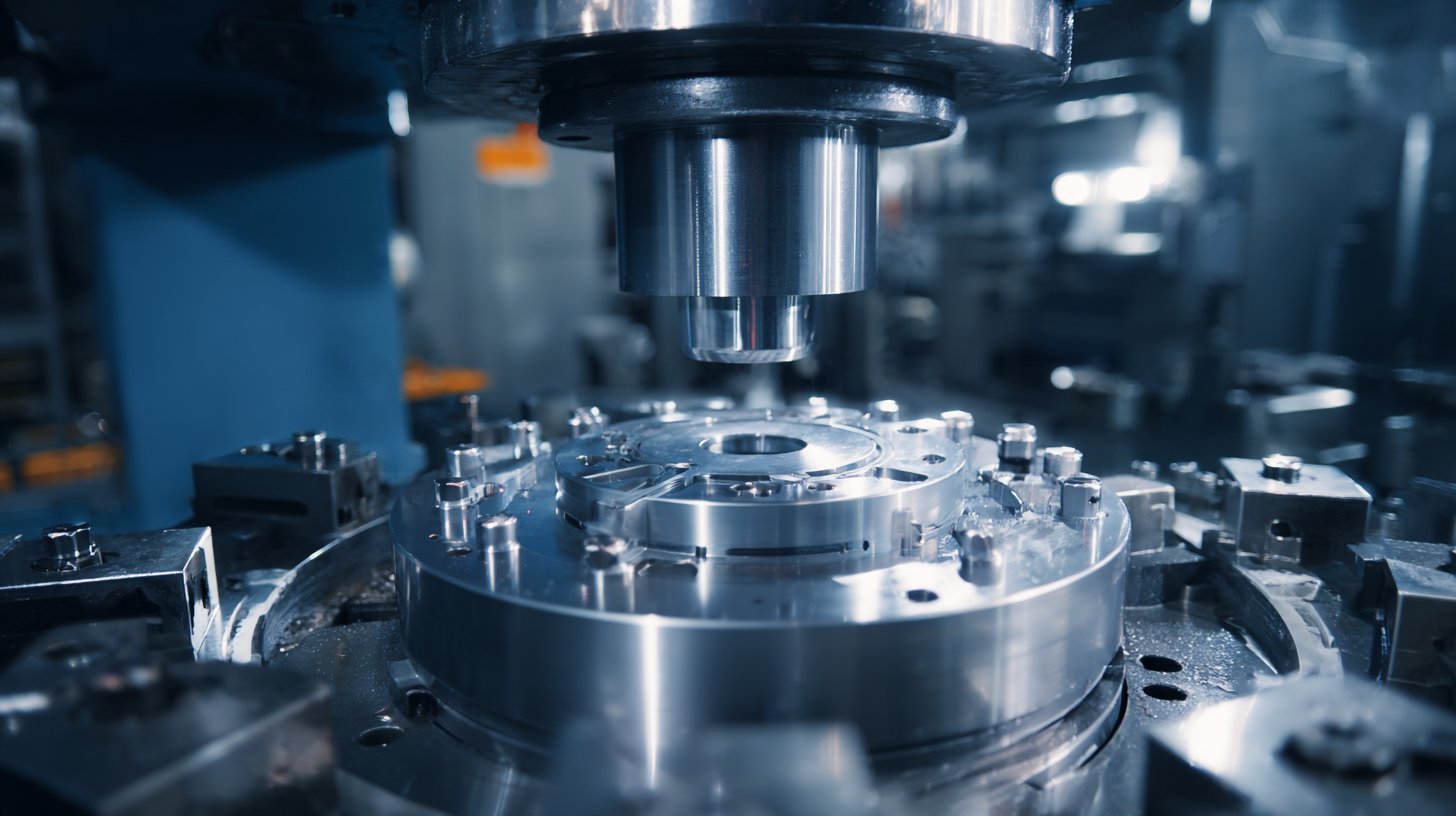
This article delves into the future of manufacturing with metal stamping parts, highlighting their innovative applications and the significant impact they will have on various industries.
The evolution of metal stamping technology has significantly transformed modern manufacturing, catering to diverse industries such as automotive, aerospace, and electronics. According to a report from MarketsandMarkets, the global metal stamping market is projected to grow from USD 197.8 billion in 2021 to USD 277.7 billion by 2026, reflecting a compound annual growth rate (CAGR) of 7.1%. This growth is primarily driven by advancements in technology, which allow for greater precision in manufacturing processes and the ability to produce complex geometries at scale.
Recent innovations in metal stamping techniques, including progressive die stamping and servo press technology, have enhanced production efficiency and reduced waste. For instance, servo presses, which offer greater control over the stamping process, can reduce energy consumption by up to 30% compared to traditional mechanical presses. This not only lowers operational costs but also leads to more sustainable manufacturing practices. The incorporation of automation and smart technology further enables manufacturers to optimize processes, leading to higher quality products and shorter lead times. As industries continue to demand more innovative and customizable components, the role of advanced metal stamping technologies becomes increasingly critical in meeting these challenges.
Metal stamping technology is revolutionizing several key industries by providing precision-engineered components that meet the demanding standards of modern manufacturing. According to a report by MarketsandMarkets, the global metal stamping market is expected to reach USD 210 billion by 2026, growing at a CAGR of 4.1%. This growth is primarily driven by sectors such as automotive, aerospace, and electronics, where lightweight and durable components are essential for efficiency and innovation.

In the automotive industry, metal stamping is critical for producing intricate parts like chassis and brackets. The capability to create complex shapes with tight tolerances accelerates production while enhancing safety and performance. A study by the Automotive Industry Action Group (AIAG) indicates that integrating metal stamping processes can reduce production time by up to 30%, allowing manufacturers to adapt quickly to market demands. Similarly, in the electronics sector, the push for smaller and more efficient devices has led to an increased reliance on metal stamping for components like housings and connectors, streamlining production and lowering costs. As industries continue to evolve, the innovative applications of metal stamping will play a pivotal role in shaping the future of manufacturing.
The aerospace and automotive sectors are experiencing significant transformations, driven largely by innovative applications of metal stamping parts. As the global demand for electric vehicles (EV) surges, the metal stamping market is projected to reach USD 444.78 billion by 2032, growing at a compound annual growth rate (CAGR) of 4.26%. This growth reflects the increasing necessity for lightweight, high-performance components that metal stamping technology uniquely provides. In aerospace, precision-engineered stamped parts contribute to enhanced safety and performance, playing a critical role in the construction of airframes and engine components.

Furthermore, the sheet metal fabrication services market is also on a rapid ascent, expected to hit USD 33.31 billion by 2034. As manufacturers focus on efficiency and sustainability, the use of advanced metal stamping techniques helps create intricate designs while reducing material waste. This not only supports the automotive industry's shift toward more environmentally friendly vehicles but also facilitates the production of complex parts required in modern aerospace applications. The integration of innovative technologies in metal stamping ensures that these sectors remain at the forefront of manufacturing advancements, addressing both operational demands and regulatory challenges.
The rise of automation and robotics in the manufacturing sector has significantly transformed the landscape of metal stamping processes. According to a report by the International Federation of Robotics, the global sales of industrial robots are projected to reach 400,000 units by 2024, with a significant portion of these being implemented in metal stamping applications. This increase in automation not only enhances production efficiency but also reduces labor costs, as advanced robotic systems can operate with high precision and minimal downtime.
Furthermore, studies indicate that manufacturers adopting robotics in metal stamping can achieve a reduction in operational costs by up to 30%. Automation facilitates faster cycle times and improved quality control, leading to a lower incidence of defects and waste. A report from Deloitte emphasizes that companies implementing automation technologies could potentially save over $1 trillion in operational expenditures by 2030, underscoring the importance of integrating innovative solutions in metal stamping to maintain competitiveness in the market. As these technologies continue to evolve, their impact on efficiency and cost-effectiveness in manufacturing will become even more profound.
The manufacturing landscape is rapidly evolving towards smarter and more sustainable practices, particularly in the field of metal stamping. As the market for metal manufacturing is projected to surge from $82.09 billion in 2024 to an impressive $1,008.18 billion by 2033, it underscores the importance of adopting innovative processes that enhance efficiency while minimizing environmental impact. Smart manufacturing technologies, like IoT and AI, are set to revolutionize traditional metal stamping operations, offering real-time data analytics that optimize production and reduce waste.
Tips: To stay competitive, manufacturers should invest in training their workforce on new technologies and continuous improvement methodologies. Implementing energy-efficient machinery and sustainable materials is essential for aligning with eco-friendly practices.
Moreover, the growth of sustainable metal stamping practices reflects a broader trend towards circular economy principles. By focusing on recycling and reusing materials, manufacturers can significantly cut down on resource consumption and elevate their market position. Techniques such as advanced die designs and automated processes not only streamline production but also enhance product quality, paving the way for innovative applications across various industries.
Tips: Exploring partnerships with green technology firms can facilitate the integration of sustainable practices into metal stamping operations, helping companies to stay ahead in a competitive market.
